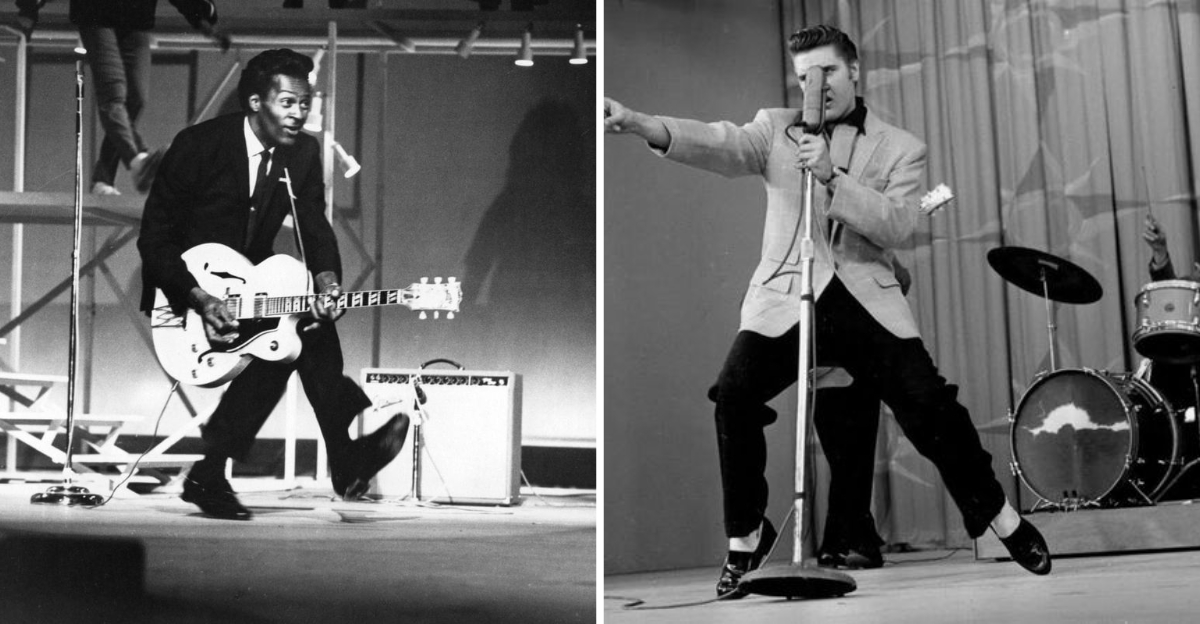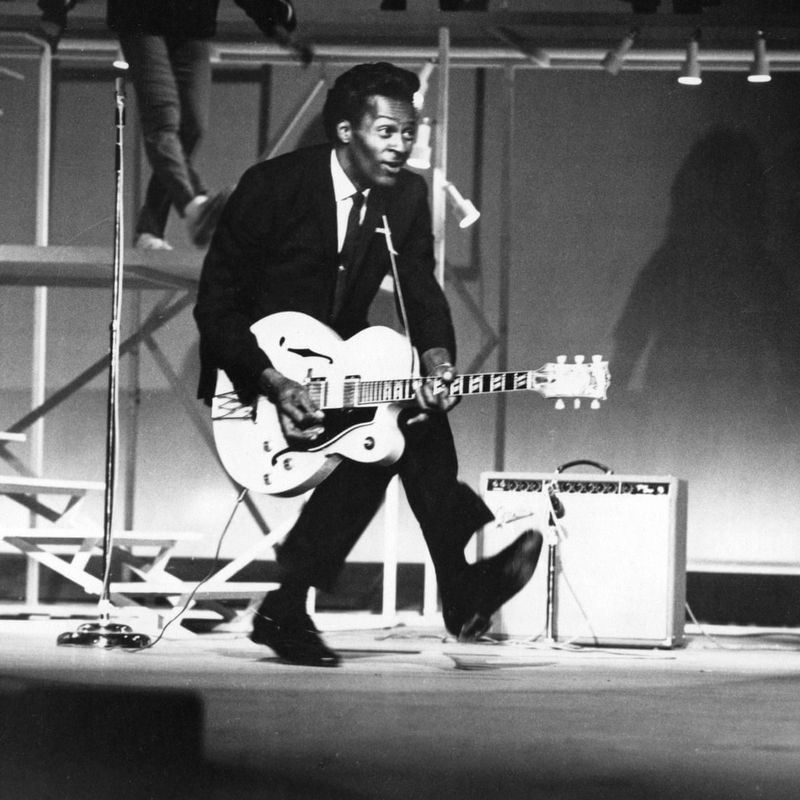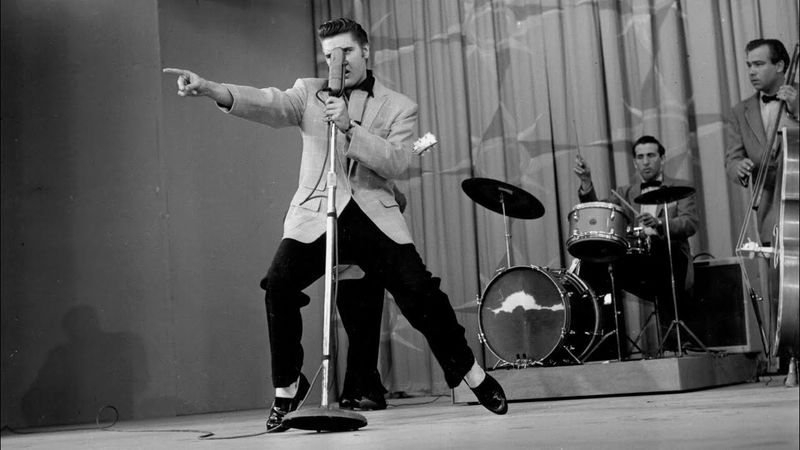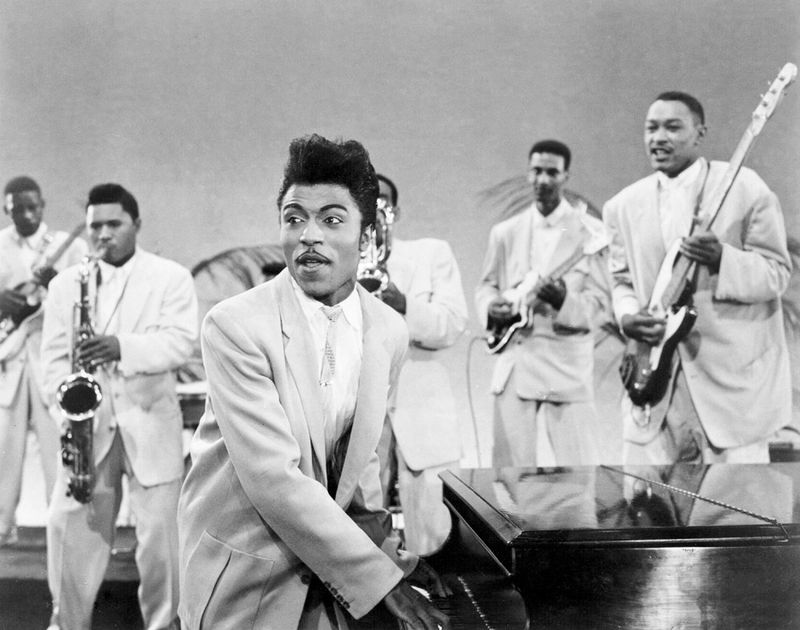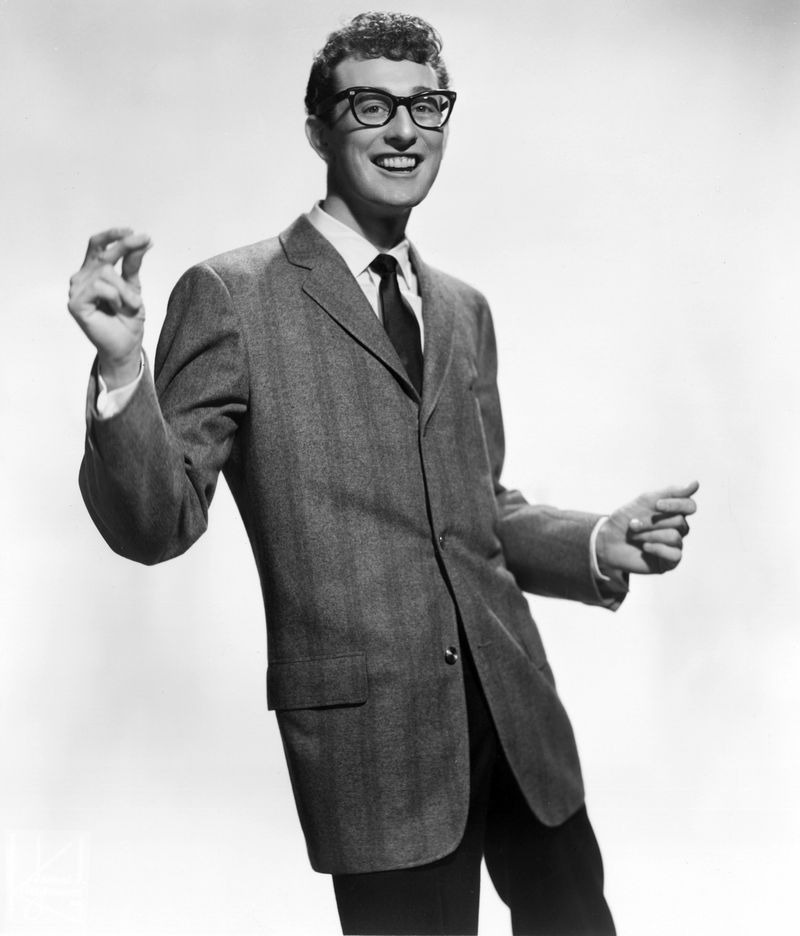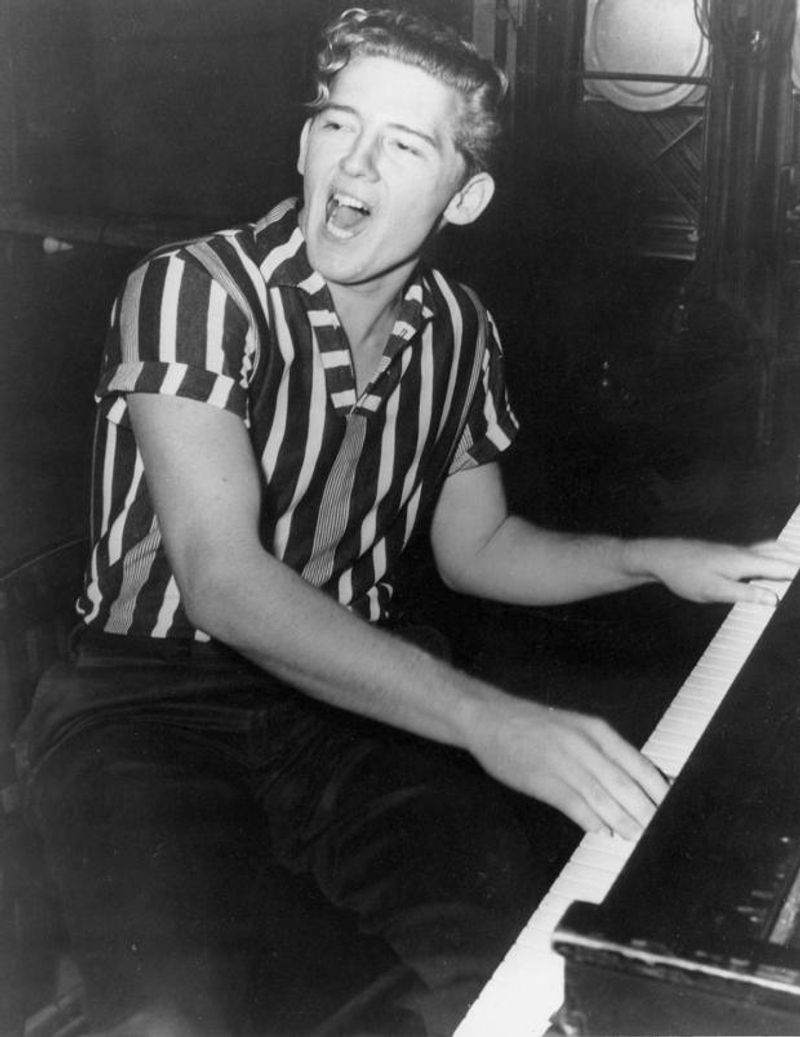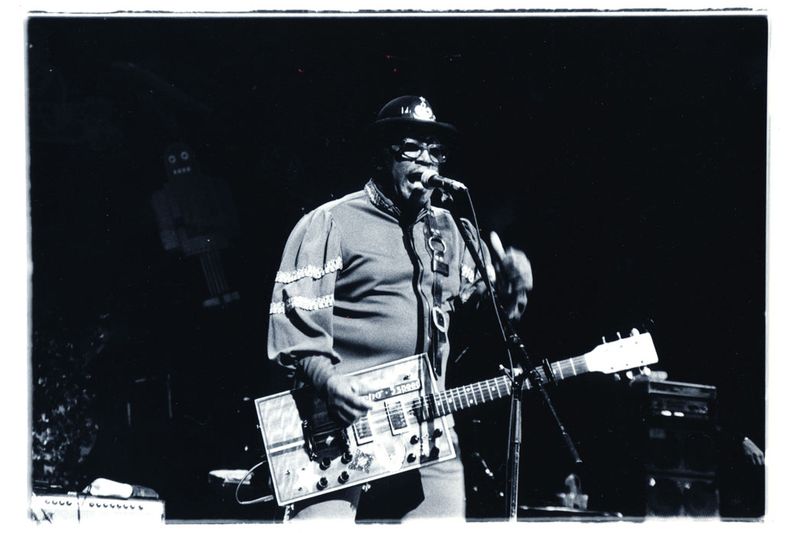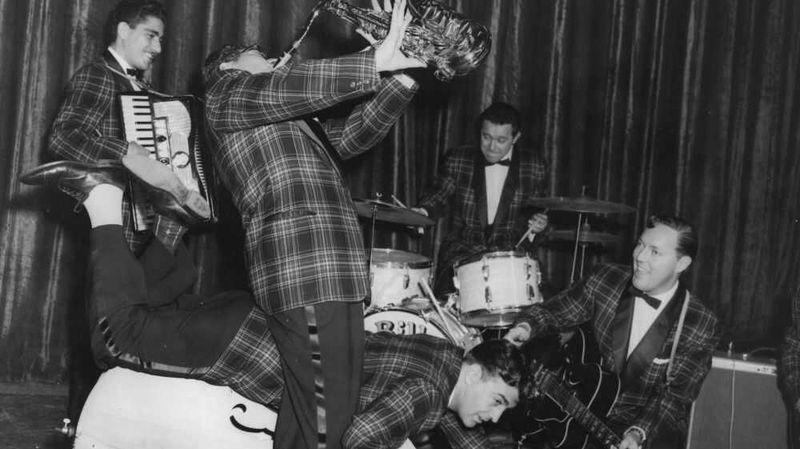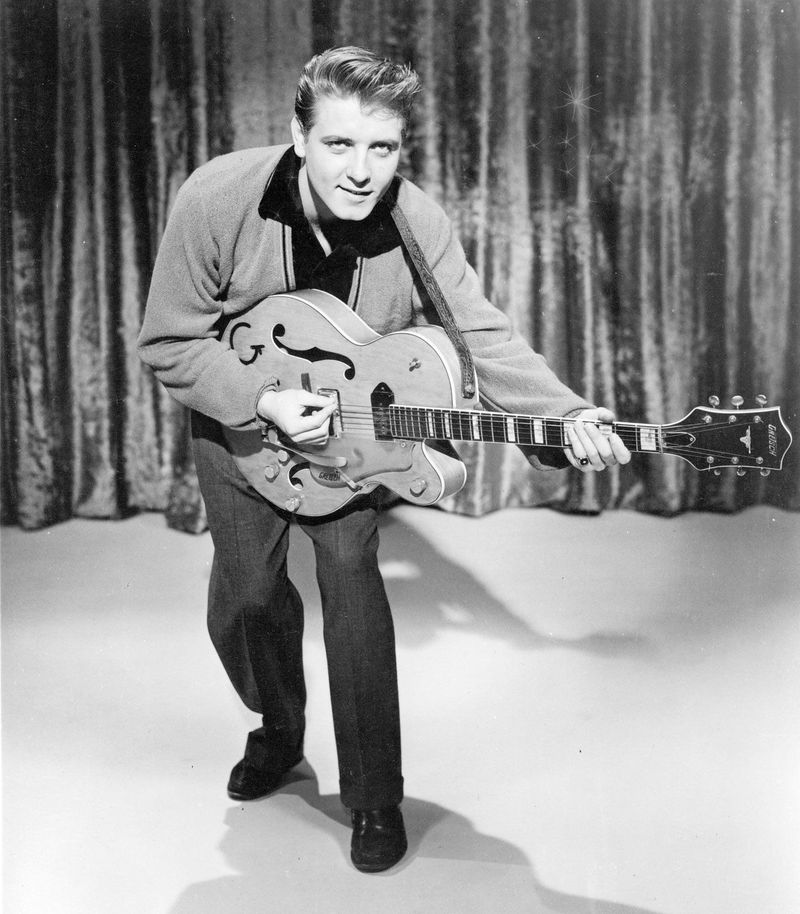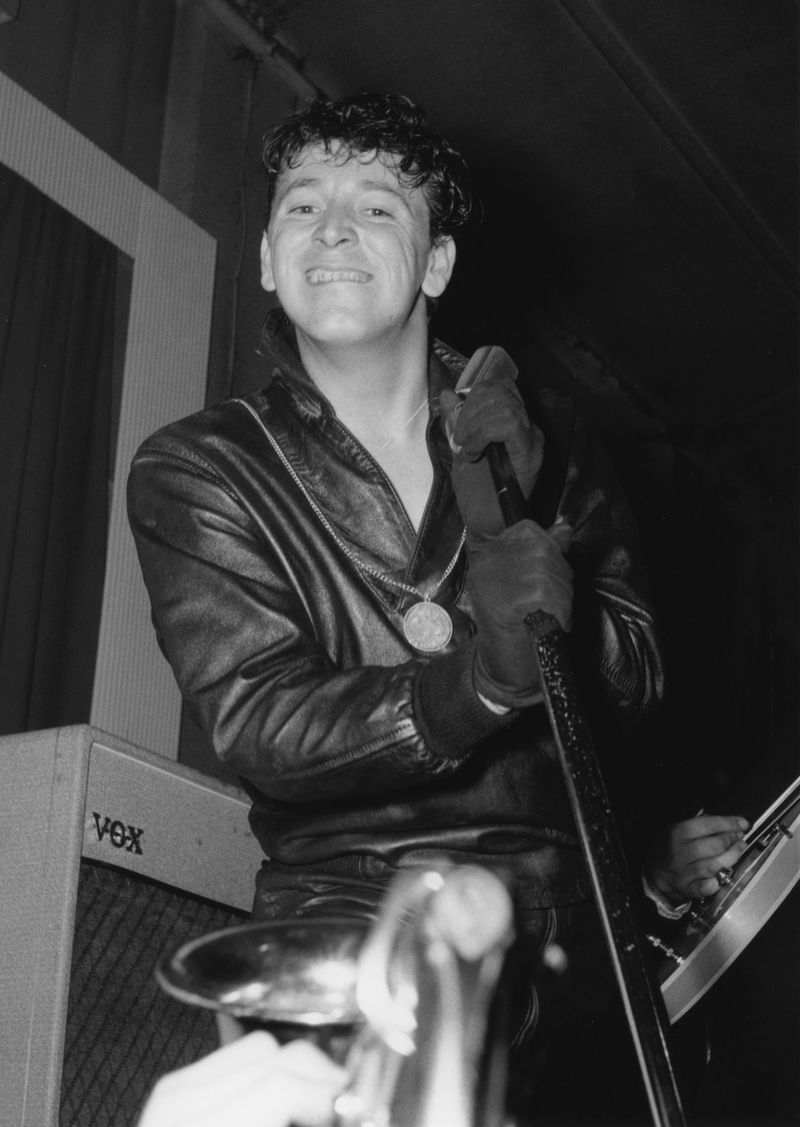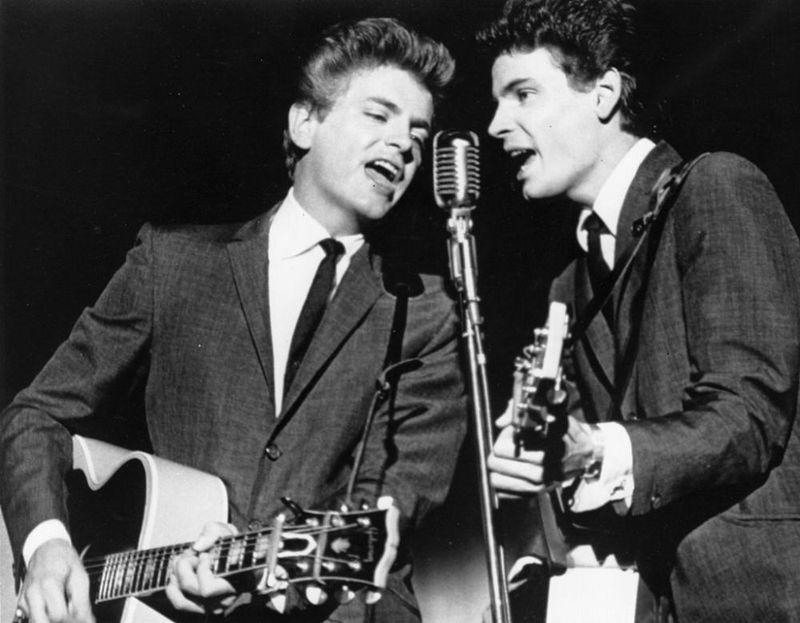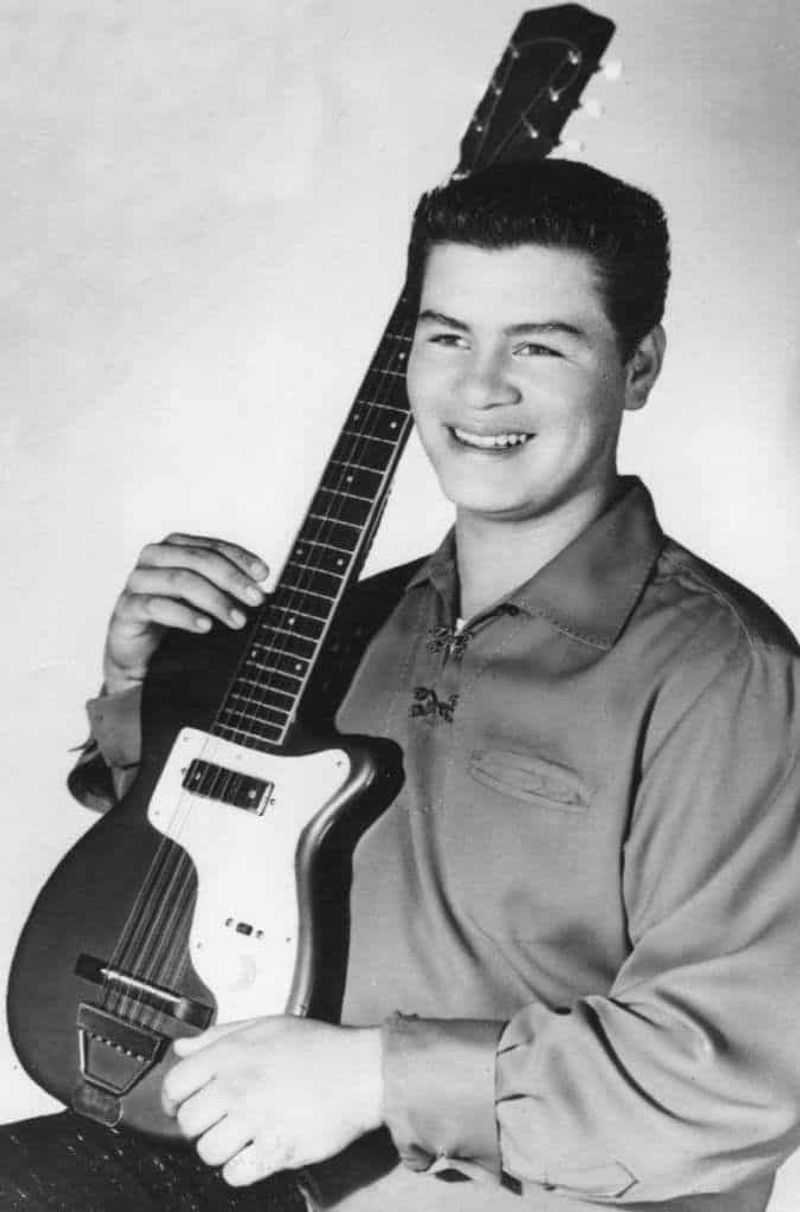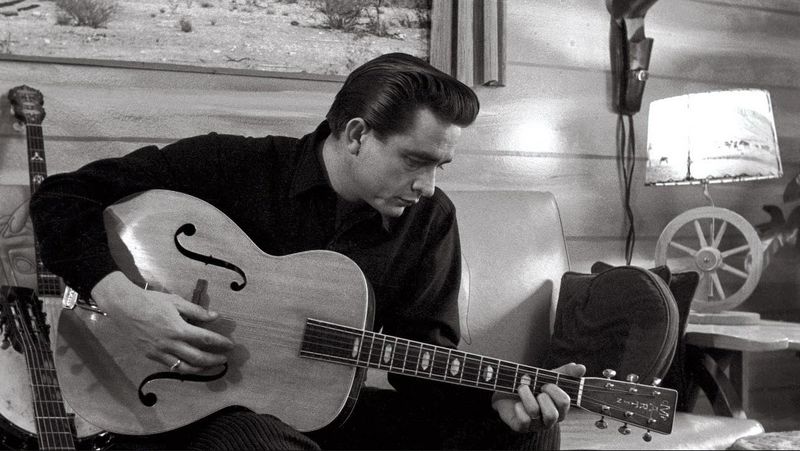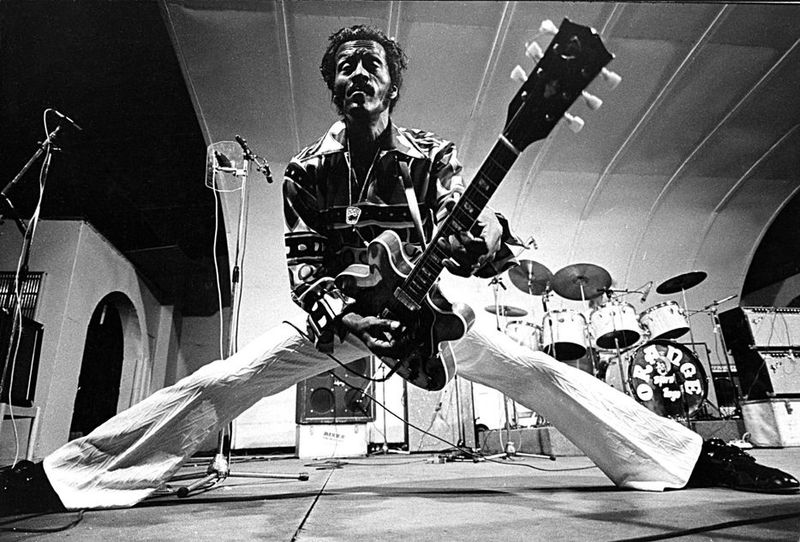The 1950s birthed a musical revolution that changed everything. Rock ‘n’ roll burst onto the scene, blending rhythm & blues, country, and gospel into something entirely new and electrifying. These pioneering songs broke barriers, challenged conventions, and laid the foundation for all rock music that followed. Decades later, they still pulse with the same raw energy and rebellion that made teenagers dance in the aisles and parents worry about this dangerous new sound.
1. Chuck Berry — “Johnny B. Goode” (1958)
Lightning-fast guitar licks and a story about a country boy who could “play a guitar just like ringing a bell” created one of rock’s most enduring anthems. Berry’s duck-walking stage presence matched the excitement of this autobiographical tale (with a few tweaks to make it more marketable).
The song’s influence stretches far beyond music—NASA even included it on the golden record sent to space aboard Voyager in 1977. When aliens discover Earth music, this will be their introduction to rock ‘n’ roll.
Even today, aspiring guitarists cut their teeth on Berry’s iconic intro, proving this pioneering track remains the gold standard for rock guitar playing.
2. Elvis Presley — “Hound Dog” (1956)
The King’s hip-swinging performance of this track on The Milton Berle Show sparked national outrage and teenage obsession simultaneously. Originally recorded by Big Mama Thornton, Elvis transformed it into something entirely his own—raw, rebellious, and impossible to ignore.
The backing band’s frantic pace and Presley’s sneering delivery created rock’s perfect storm. Scotty Moore’s guitar solo still stands as a masterclass in economical playing, saying everything necessary in just a few well-chosen notes.
Elvis recorded the song in a single take after performing it live for months, capturing the electric energy that made him the world’s first true rock star.
3. Little Richard — “Tutti Frutti” (1955)
“A-wop-bop-a-loo-mop-a-lop-bam-boom!” With that nonsensical yet perfect battle cry, Little Richard kicked down the door for rock ‘n’ roll’s wild side. The piano pounds like a jackhammer while Richard’s voice screams and soars with unmatched intensity.
The original lyrics were too risqué for 1955 audiences, but even the cleaned-up version couldn’t tame the song’s untamed spirit. Richard’s flamboyant performance style—pounding the keys while standing, eyes wide, hair perfectly pompadoured—matched the song’s uncontained energy.
Beatles legend Paul McCartney once admitted he learned his signature “wooo” from studying Little Richard’s volcanic vocal techniques on this very track.
4. Buddy Holly — “Peggy Sue” (1957)
Hiccuping vocals and a propulsive drumbeat drive this love song that almost wasn’t. Originally titled “Cindy Lou” after Holly’s niece, drummer Jerry Allison convinced Buddy to rename it after his girlfriend (later wife) Peggy Sue Gerron.
The song’s innovative recording techniques included close-miking the drums—a rarity in the ’50s that created the distinctive driving rhythm. Holly’s guitar playing, while seemingly simple, introduced subtle techniques that influenced countless guitarists who followed.
Despite his tragically short career (Holly died in a plane crash just two years after this hit), “Peggy Sue” showcases why his musical legacy endures—genuine emotion delivered with technical innovation and an instantly recognizable vocal style.
5. Jerry Lee Lewis — “Great Balls of Fire” (1957)
The Killer lived up to his nickname with this piano-pounding, hell-raising anthem that perfectly captured his wild-man persona. Lewis attacked the keys with such ferocity that producers reportedly had to place bricks on the piano to keep it from moving during recording sessions.
Religious guilt haunted Lewis during the recording—he initially refused to perform what he considered “the devil’s music.” The tension between his Pentecostal upbringing and rock ‘n’ roll lifestyle infuses every note with dangerous electricity.
His marriage to his 13-year-old cousin shortly after this hit derailed his career, but the song’s untamed energy—complete with Lewis’s signature moves of kicking away the piano stool and playing with his feet—remains undiminished.
6. Bo Diddley — “Bo Diddley” (1955)
Named after himself and powered by what would become known worldwide as the “Bo Diddley beat,” this self-mythologizing track established both the man and his rhythm as rock ‘n’ roll foundations. The song’s distinctive “shave-and-a-haircut” pattern influenced everyone from Buddy Holly to The Rolling Stones.
Diddley’s rectangular custom-built guitar and confident swagger made him instantly recognizable. His innovative use of tremolo and distortion pushed electric guitar sounds into new territory.
The lyrics themselves are simple boasting—a tradition that would later become central to hip-hop—but the hypnotic, driving rhythm is what made this song revolutionary. That beat, with African and Caribbean roots, transformed American popular music forever.
7. Carl Perkins — “Blue Suede Shoes” (1956)
Rockabilly perfection sprang from an offhand comment heard at a dance. Fellow Sun Records artist Johnny Cash suggested Perkins write a song about blue suede shoes after seeing a dancer frantically protecting his fancy footwear.
Perkins wrote it that night, and by morning, rock history was made. His original version outcharted Elvis Presley’s cover, showcasing Carl’s authentic country-boy-meets-rocker style with slap bass, crisp guitar, and southern drawl.
Sam Phillips at Sun Records reportedly stopped the first take after Carl’s brother accidentally knocked over a drum stand. The second take—the one we know today—captured lightning in a bottle with its perfect blend of country twang and rock ‘n’ roll attitude.
8. Bill Haley & His Comets — “Rock Around the Clock” (1954)
Rock’s first mainstream anthem almost didn’t happen. Initially released as a B-side, this track languished until featured in the juvenile delinquency film “Blackboard Jungle,” catapulting it to number one and igniting rock’s commercial explosion.
Haley wasn’t young or conventionally handsome like later rock stars, but his energetic delivery and the song’s relentless drive broke barriers. The famous guitar intro by Danny Cedrone (who died shortly after recording it) remains one of rock’s most recognizable openings.
Teenagers literally danced in movie theater aisles when hearing it, while adults worried about this dangerous new music—exactly the generation gap that would fuel rock’s cultural revolution for decades to come.
9. Eddie Cochran — “Summertime Blues” (1958)
Teenage frustration never sounded so good. Cochran captured adolescent angst decades before “teen spirit” had a smell, crafting the perfect rebellion anthem about summer jobs, strict parents, and politicians who wouldn’t listen.
The song’s distinctive bass voice (“I’d like to help you, son, but you’re too young to vote”) provided comic relief while highlighting generational divides. Eddie’s innovative recording techniques included overdubbing his own voice multiple times—revolutionary for the 1950s.
Tragically, Cochran died at just 21 in a UK taxi accident, but his legacy lives on through this proto-punk classic. The song’s continued relevance proves some teenage problems—summer jobs, authority figures, and wanting to have fun—never really change.
10. Gene Vincent — “Be-Bop-A-Lula” (1956)
Written in a hospital bed while recovering from a motorcycle accident, Vincent’s breakthrough hit drips with sultry, dangerous cool. His Blue Caps band provides the perfect backdrop, especially Cliff Gallup’s innovative guitar work that influenced everyone from Jeff Beck to Brian Setzer.
Vincent himself embodied rock’s dangerous side, performing in black leather with a limp from his motorcycle injury. The song’s minimal lyrics let his voice—alternating between Elvis-like croons and wild howls—take center stage.
Legend has it Vincent was trying to write something like “Blue Moon” but created something far more primal instead. The result was a million-seller that John Lennon later credited as the first record he ever purchased.
11. The Everly Brothers — “Bye Bye Love” (1957)
Sibling harmony never sounded sweeter than on this country-rock crossover hit. Don and Phil Everly’s voices blend so perfectly they seem to create a third voice—a technique that directly influenced The Beatles, Simon & Garfunkel, and countless others.
Rejected by 30 other artists before the Everlys recorded it, the song features an instantly recognizable acoustic guitar intro and a deceptively upbeat melody masking heartbreak lyrics. Their perfect vocal timing comes from years of singing together in their family’s radio show.
The brothers pioneered the rock ballad format while maintaining enough edge to appeal to the new teenage market. Their seamless blend of country, pop, and rock elements created a template for harmony-driven rock that remains influential today.
12. Fats Domino — “Ain’t That a Shame” (1955)
New Orleans rhythm pours through every note of this crossover hit that brought Domino’s piano-driven sound to white audiences. His warm, rolling piano style and gentle vocal delivery made rock ‘n’ roll accessible to listeners who might have been scared off by wilder performers.
Pat Boone’s sanitized cover version actually outcharted Domino’s original—a common practice in the segregated 1950s music industry. Yet Fats maintained his good-natured approach, letting his music speak for itself rather than complaining about the unfairness.
The song’s simple, repeated chorus proves you don’t need complicated lyrics to express heartbreak. Domino’s influence extended to the British Invasion, with Paul McCartney crediting him as a primary influence on The Beatles’ early sound.
13. Ritchie Valens — “La Bamba” (1958)
Rock ‘n’ roll’s first Latin crossover hit came from a teenager who didn’t even speak fluent Spanish. Valens (born Richard Valenzuela) learned the traditional Mexican folk song phonetically, then transformed it with electric guitars and a driving backbeat into something entirely new.
His guitar playing showed remarkable sophistication for a 17-year-old, with intricate picking patterns and rhythmic complexity. The song broke cultural barriers at a time when Hispanic performers rarely found mainstream success in American pop music.
Tragically, Valens died alongside Buddy Holly in the infamous 1959 plane crash, just eight months after recording this hit. His brief career—just two albums—suggested unfulfilled potential, but “La Bamba” remains a joyful testament to rock’s multicultural foundations.
14. Johnny Cash — “Get Rhythm” (1956)
The Man in Black showed his lighter side with this toe-tapping celebration of finding joy through music even during life’s hardships. Cash’s distinctive boom-chicka-boom guitar style drives this upbeat tale of a shoeshine boy who stays happy by keeping rhythm while he works.
Released as the B-side to “I Walk the Line,” this track showcases the rockabilly side of Cash’s sound. The Tennessee Two’s minimalist approach—Luther Perkins on electric guitar and Marshall Grant on bass—created space for Cash’s remarkable baritone to shine through.
Though Cash would later be claimed primarily by country music, early Sun Records recordings like this reveal his rock ‘n’ roll credentials. The song’s message about finding joy through music during tough times perfectly encapsulated rock’s emotional appeal.
15. Chuck Berry — “Roll Over Beethoven” (1956)
Berry’s musical declaration of independence announced rock ‘n’ roll as the new cultural force in town. Written partly as a playful dig at his sister who hogged the family piano to practice classical music, it became rock’s mission statement—out with the old, in with the electric guitar.
The song’s clever lyrics showcase Berry’s gift for wordplay and storytelling. References to Tchaikovsky and Beethoven demonstrate his awareness of rock’s revolutionary position in music history.
Berry’s guitar introduction—now one of the most recognizable in music—established the template for rock guitar playing. The song has been covered by everyone from The Beatles to Electric Light Orchestra, proving Berry’s boast about rock ‘n’ roll replacing the classics came true in ways even he couldn’t have imagined.
